Escaping the outskirts of a city can bring a rush of expectation for what might lie ahead. Leaving Auckland for a drive along the northern edge of the Manukau Harbour, I knew there would be plenty.
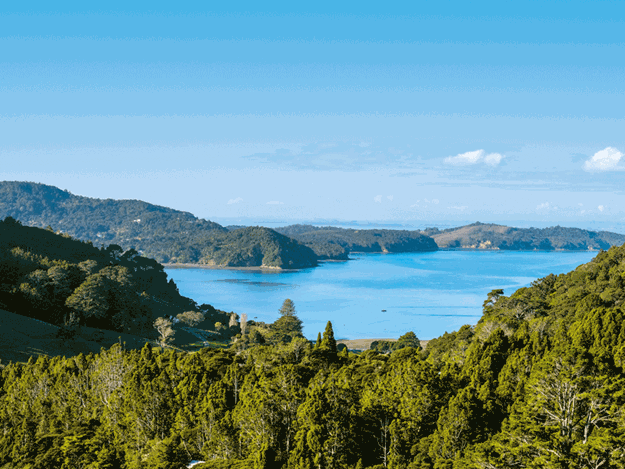 |
View over Huia and Foster Bays |
The west coast of Auckland city differs dramatically from the east. The east is mild and hospitable with gentle surf and soft-sanded tawny beaches. The west coast is yang to its yin; seething surf rolls up the dark and moody beaches and claws at the feet of the Waitakere Ranges, which form a bulky barrier to the tempests that are hurled inshore from the Tasman Sea.
The wonder of the west is that it has retained its wild, untrammelled nature despite being just an hour’s drive from the country’s biggest metropolis. Scenic Drive begins at the Fringe of Heaven, which is the poetic translation for Titirangi, and unfurls along the high ridges of the ranges’ volcanic peaks through part of the 8500 hectares of native bush.
But to understand more of the Waitakeres (or the Waitaks as locals dub them) it is necessary to travel further than this well-beaten track. Just past Titirangi village, I took the detour towards Whatipu Beach, which forms the northern head of Manukau Harbour.
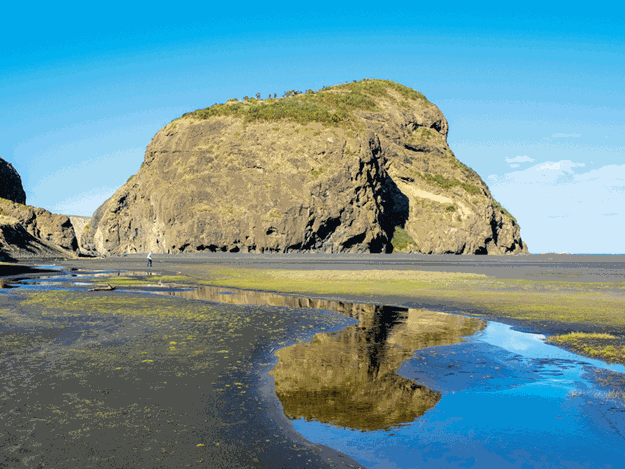 |
A bulging rock marks the entrance to the Manukau Harbour |
It’s about 25km from Titirangi to Whatipu, but it seems a lot longer along the narrow road that at some points hugs the harbour’s shore. We left the village and plunged down Huia Road to the coast past the grassy wall of the Nihotupu Dam.
“Winding old road,” said Bill. He didn’t know just how winding it was to become.
The first point of interest is the tiny settlement of Cornwallis and its tidal beach, a peaceful spot where a large picnic ground is shaded by huge pohutukawa trees.
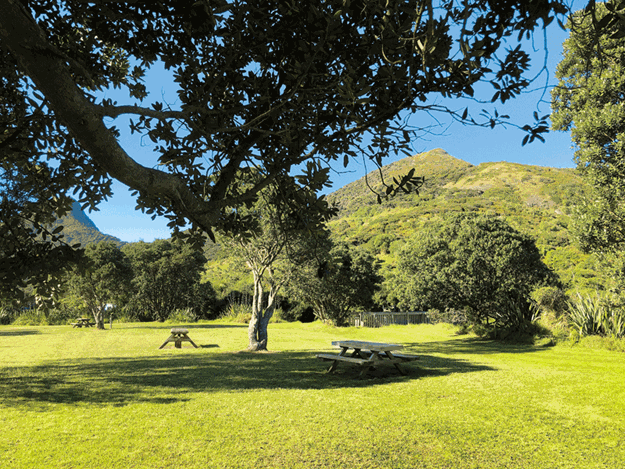 |
The picnic area at Whatipu |
On the parking area’s hard surface RVs can stay for the night for a small fee. That day the Manukau’s tide was gently receding, revealing glistening mud flats. The bay was wrapped in a soothing silence.
In 1838, there was little about Cornwallis that soothed the aspiring settlers who arrived there from Scotland. Back then, this was the site of an ambitious settlement plan. For 101 pounds, immigrants from Scotland were promised an acre of land in a new town, a hundred more in the country, a free passage and guaranteed wages for a year – a bit like winning Lotto.
The reality was a little different. After 301 days at sea, they found themselves in a foreign land abandoned on the shore of a remote, soggy and heavily forested bit of coastland. Worse, their promised holdings were unsecured. Most didn’t stay long!
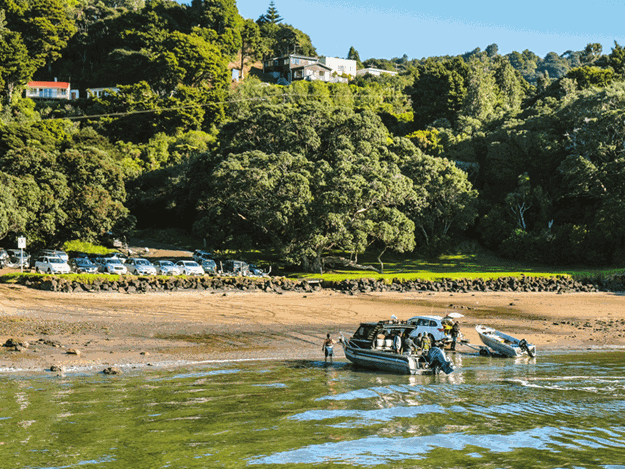 |
Cornwallis wharf parking area |
The side road that runs down the Karangahape Peninsula from here leads to the 200-metre-long Cornwallis wharf. This timber replica of the 1926 original (one of eight wharfs that once served the Manukau Harbour) was rebuilt in 1999.
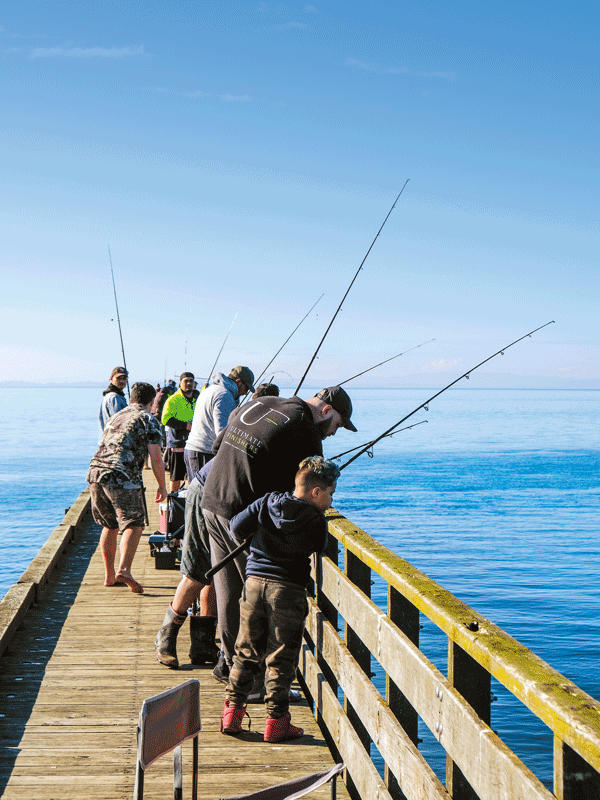 |
Happy days – even if the fish aren’t biting |
It was a stunning winter’s day when we pulled up in the carpark. Men, women and children, more of them than there were fish in the sea, dangled lines from the wharf’s railing. If I’d had a line I’d have joined them and idled through the morning in contemplation of the calm and pearly water and the shadowy outline of Mt Mangere on the harbour’s southern shore.
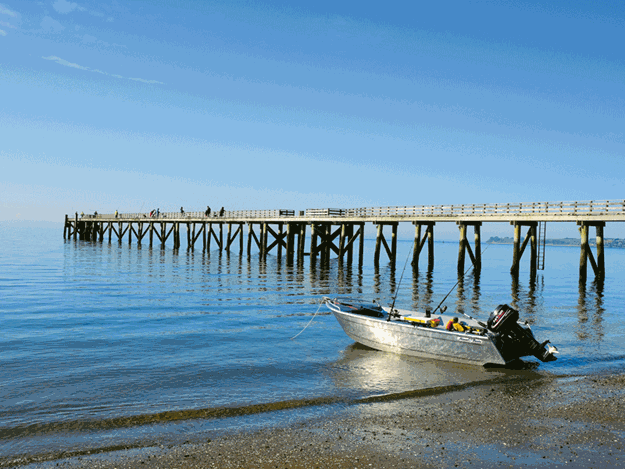 |
The reconstructed Cornwallis Wharf |
Just past the Cornwallis turn-off, vehicles were crammed into the carpark at the start of the walkway of the Kakamatua Inlet. This popular tussocky path beside the water is designated for dogs, although humans, as long as they behave, are tolerated.
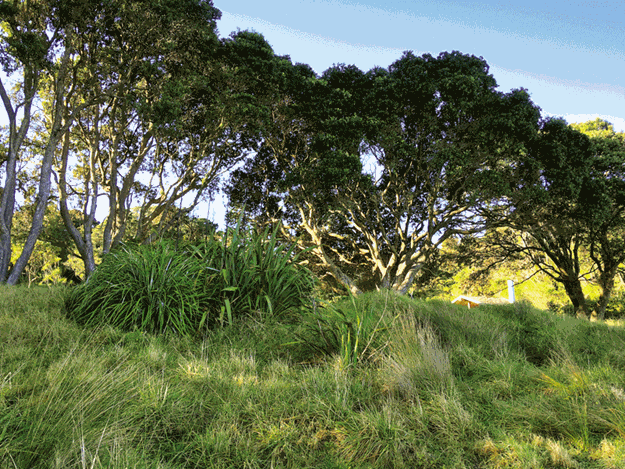 |
Pohutukawa trees line the beach at Kaitarakihi |
Another side road leads to Kaitarakihi Beach, where a secluded picnic area is hugged by
native trees. And then we dropped down into Huia, a tiny hamlet clinging to the steep hills that form the backdrop of an immense bite out of the coastline.
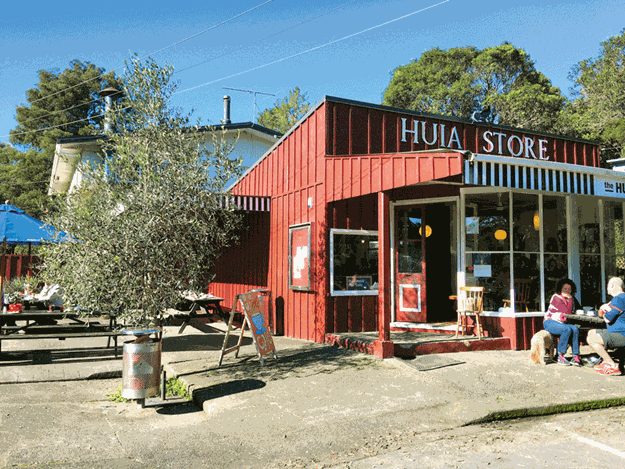 |
The Huia store is the village hub |
A wide, grassy domain borders the tidal beach and, across the road, the Huia Foodstore cafe, the hub of the village, provides the last of any sustenance found along this road. A cut-out huia bird perches on its roof to help visitors know where they are, but Huia was apparently named not for the bird, but for a Maori chief who came to this place, liked it and never left.
It has a small but interesting Settlers’ Museum, which opens sporadically. Among the detritus of the village’s early life are some bits of the Royal Navy corvette HMS Orpheus that was wrecked on the Manukau Harbour bar in 1863 with the loss of 189 lives, making it New Zealand’s worst maritime tragedy.
The road through Little Huia and on to the great reaches of Whatipu Beach at the entrance to the Manukau Harbour becomes more and more like a roller-coaster. The last few kilometres are metal and, in parts, alarmingly narrow.
“I’ll not be bringing the caravan out here,” said Bill. Ironically, the first thing we saw when we reached the campground at Whatipu was a caravan about the same length as ours. It didn’t change our minds.
The challenge of this road is not all in the mind, but there are different ways of thinking about it. Also in the campground was a neatly set up, five-metre van occupied by a German couple.
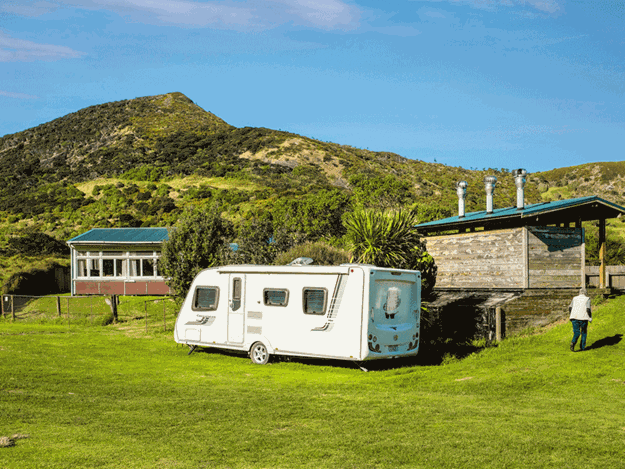 |
The camping ground at Whatipu |
“How did you find the road?” I asked Otto. He gave me an odd look. “On the map,” he said.
“No, I mean driving it.” “Oh that. No problem. We came here last night in the dark. It was a great adventure. We thought we were driving to the end of the earth,” he replied.
We didn’t think this part of the road suitable for large RVs or for caravans, and even smaller ones require a confident driver who isn’t going to freak out if they meet another vehicle on a corner.
But manager of the Whatipu Lodge and Campground Peter Reim told me plenty of motorhomes and even a few caravans stay in the campground and he doesn’t hear much about the road being a problem. He did say, however, that it’s best suited to vehicles seven metres or under.
“The turn onto the bridge at the campground entrance is quite sharp and vehicles larger than that find it hard to negotiate,” he said. “If they can’t manage it, we just let them stay in the carpark.”
Peter also manages the collection of historic wooden buildings known as Whatipu Lodge, now the only dwelling and the only accommodation. For anyone who does make it, either in a car or an RV, Whatipu is an exceptional place.
From the parking area or campground it was a bit of a trek through the sand dunes and swamp to get to the vast black beach, where the sea still seemed like a day’s walk away. On the horizon it was joined by an infinite and unblinking sky. It is not always so.
Most times swirling tides and relentless westerly winds are the rulers of Whatipu, changing the shape of the beach from year to year so that the several high rocky towers that poke up from the sandy reaches are sometimes part of the mainland and sometimes islands.
Years ago, I abseiled down one of those bastions of the beach. I looked at them now and it occurred to me that I was probably mad. At one end of the beach are spectacular caves about 20 minutes’ walk from the carpark.
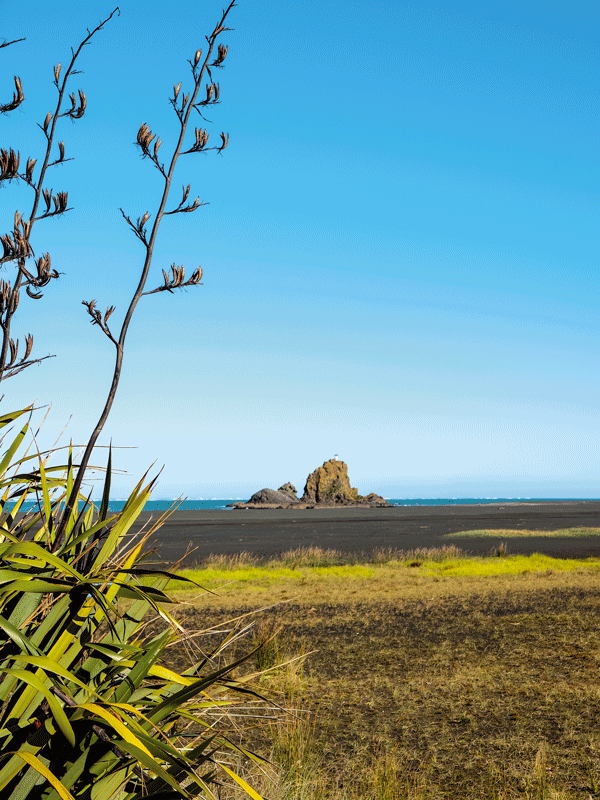 |
A lighthouse beacon sits atop Ninepin Rock on Whatipu Beach |
The largest cave was used for dances, but the dance ‘floor’ is now covered by five metres of sand. At the other end of the beach, through a gap in the sea-bitten cliffs, is a view of the Manukau’s southern head and the lighthouse at the end of the Awhitu Peninsula.
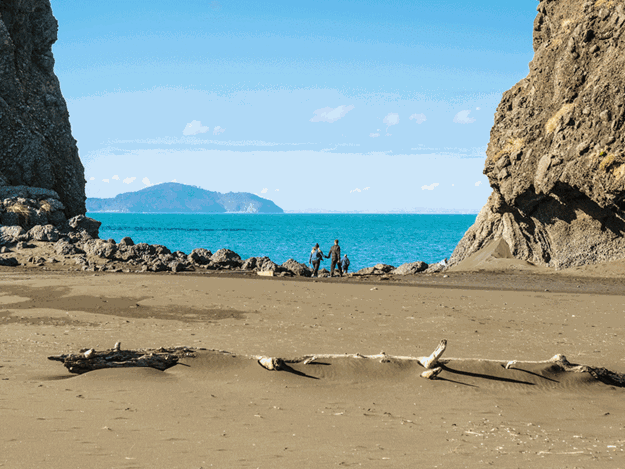 |
Looking from the north head of the Manukau Harbour to Awhitu on the south head |
Of all the beaches that invade the rugged Waitakeres, Whatipu is arguably the most spectacular. Otto nailed its essence when he said it felt like the end of the earth. The emptiness, the isolation, the immense unfettered space tugged at my soul as if urging it to fly off into the cosmos.
If we’d stayed the night maybe it would have. At the end our day, the greater tug was to return to the city before the build-up of urban traffic ruined the experience. From the beach, Auckland’s cluttered hysteria seemed a world away.





